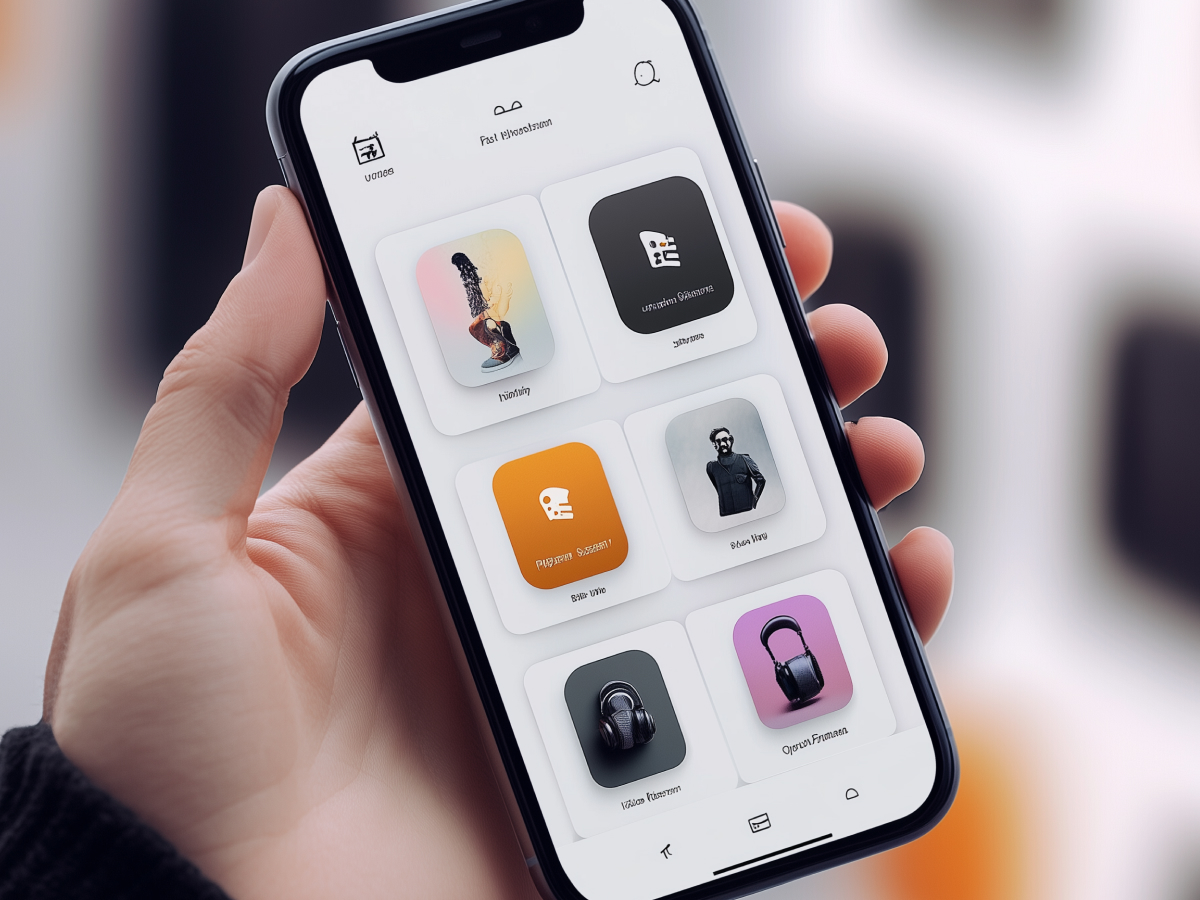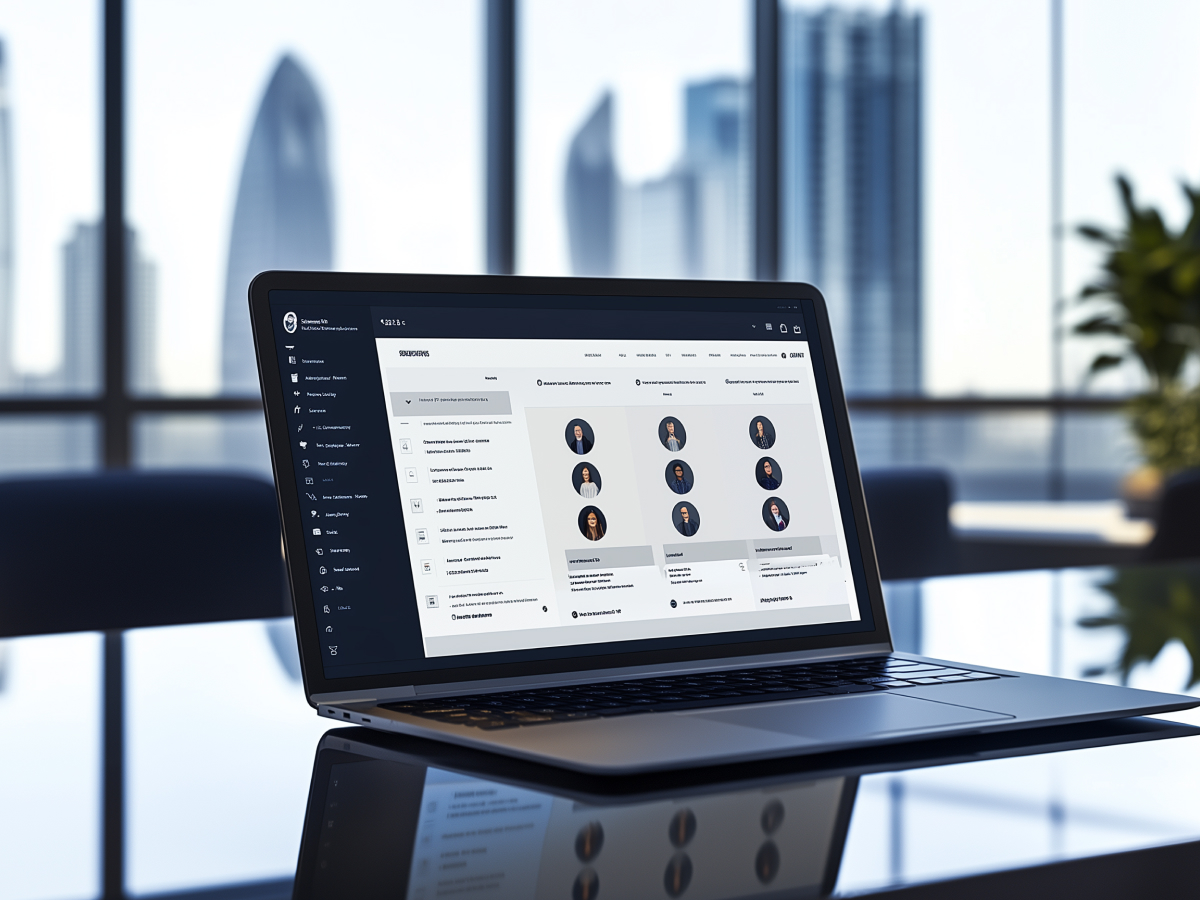Retail apps
The way people shop is changing, fast. The days of aimlessly wandering through malls are fading. Retail apps are at the forefront, giving customers a fast, seamless, and personalized shopping experience.
Retail apps are intelligent ecosystems. They track purchasing patterns, predict demand, and customize recommendations, basically, they do what a great salesperson would, but at scale. Machine learning and data analytics let businesses create highly targeted offers, increasing customer loyalty and retention. That’s not a theory; it’s a fact backed by data. Nearly 44% of retailers prioritize customer retention, while 32% focus on acquisition. A strong retail app directly impacts both.
Here’s what this means: businesses that invest in retail apps gather key insights on buying behavior, pricing sensitivity, and customer preferences. Those insights allow them to optimize product offerings, streamline inventory, and make better pricing decisions. In short, if you’re not using a retail app to engage customers, you’re leaving money on the table.
Mobile commerce is the future of retail
If you think mobile shopping is just another trend, think again. It’s taking over. Mobile commerce, or m-commerce, already represents more than half of all retail eCommerce sales, and by 2028, it’s expected to hit $3.35 trillion, up from $1.71 trillion in 2023. That’s a 63% market share of total eCommerce sales.
Why is this happening? Simple. People want convenience. A well-built retail app allows customers to browse, compare, and purchase with just a few taps. Mobile payment solutions like Apple Pay, Google Pay, and embedded checkout systems make transactions faster and safer.
This shift isn’t just about customer convenience; it’s about business survival. The companies winning in retail today are the ones optimizing for mobile-first experiences. If your retail business isn’t prioritizing a strong mobile presence, you’re competing with one hand tied behind your back.
Retail apps convert more customers
Websites are fine. But when it comes to conversions, they don’t even come close to retail apps. The numbers speak for themselves, apps have a 157% higher conversion rate than mobile websites.
Why do apps outperform websites? Control. With an app, you control the entire user experience, no distractions, no competitors luring customers away with ads. A great app builds brand loyalty, personalizes the experience, and simplifies repeat purchases.
Retention is where apps really shine. If someone downloads your app, they’re already invested in your brand. You’re no longer competing for their attention every time they open a browser. Instead, you have a direct line to them, giving you the ability to engage in ways websites simply can’t. The result? More repeat business, better lifetime customer value, and higher revenues.
Push notifications
Most marketing feels like noise, emails get ignored, social media is crowded, and ads are expensive. Push notifications, though? They’re different. They’re direct, they’re immediate, and they work. Apps that use push notifications see 88% higher engagement, and 65% of users re-engage within 30 days.
Here’s the key: push notifications have to be done right. Too many, and people disable them. Too few, and they’re ineffective. The trick is sending personalized, timely notifications that actually add value, like an alert for a price drop on a product someone was eyeing or a reminder about an item left in their cart.
When used strategically, push notifications create urgency, boost sales, and increase customer retention. The best part? They’re incredibly cost-effective. Unlike ads that require ongoing budgets, push notifications are a built-in, free marketing channel that keeps customers engaged, without competing for space in an inbox or newsfeed.
Personalization is key to customer loyalty
If there’s one thing customers love, it’s feeling like a brand gets them. That’s why personalization is the future of retail. And no, we’re not talking about just slapping a customer’s name in an email. True personalization means understanding buying patterns, predicting preferences, and delivering tailored recommendations, without the customer even asking.
“A survey by Accenture found that 91% of consumers prefer brands that offer personalized experiences.”
When customers receive product recommendations that actually align with their tastes, they spend more, and they come back more often. The magic behind this? AI and machine learning. These technologies analyze browsing behavior, past purchases, and engagement history to serve up the right offers at the right time. It’s like having a personal shopper for every user, except at scale.
Omnichannel integration
Retail isn’t about online or offline anymore. It’s both. Customers expect a smooth experience between digital and physical shopping, whether that’s browsing on an app, checking in-store availability, or picking up an online order curbside. This is what’s known as omnichannel retailing, and it’s the new standard.
A well-integrated retail app makes sure that customer interactions are fluid across all channels. Here’s an example: A shopper finds a jacket on your app, tries it on in-store, and later completes the purchase online. With an omnichannel system, their preferences, purchase history, and even loyalty points carry across all these touchpoints.
Retailers that master this approach see better engagement, higher conversion rates, and increased customer satisfaction. Why? Because customers don’t want friction. They don’t want to restart their search every time they switch devices. An omnichannel strategy makes sure they don’t have to.
The key here is backend integration, inventory management, CRM, and data syncing. Get that right, and you’re delivering a buying experience that keeps customers in your ecosystem instead of losing them to competitors.
Must-have features for a successful retail app
A retail app is only as good as its features. If it’s clunky, slow, or lacking key tools, customers will delete it faster than you can say “abandoned cart.” To stay competitive, here’s what your app must include:
- Detailed product listings: High-quality images, specs, pricing, and customer reviews. The more information, the fewer abandoned carts.
- Smooth checkout process: One-click purchasing, multiple payment options, and the ability to save carts for later. Speed is everything.
- Personalized recommendations: AI-driven suggestions based on browsing history and past purchases. Customers don’t want to search, they want the right products to find them.
- Push notifications: Smart reminders about sales, restocks, and cart abandonment to keep engagement high.
- Live chat support: Instant help for customers, either through AI chatbots or real-time human support. Faster answers = higher conversions.
- Augmented Reality (AR) features: Virtual try-ons for clothing, home decor previews, and more. AR reduces uncertainty and return rates.
- Multi-platform syncing: Customers should be able to switch between mobile, web, and in-store shopping without losing their progress.
Without these features, your app isn’t a competitive tool, it’s just another download customers will forget about.
The blueprint for building a retail app that actually works
A retail app is a strategic investment. Here’s how to build one that delivers real business results:
Step 1: Define your goal and audience
Before writing a single line of code, get clear on what your app needs to accomplish. Is it for driving sales? Improving customer experience? Boosting loyalty? Know your target customers, what they want, how they shop, and what problems they need solved.
Step 2: Build a Minimum Viable Product (MVP)
Start lean. Focus on core functionalities like product browsing, checkout, and personalization. Once the basics work flawlessly, add advanced features like AR or AI-powered recommendations.
Step 3: Prioritize UI/UX design
A clean, intuitive interface is non-negotiable. Customers won’t tolerate a slow or confusing app. Navigation should be effortless, the checkout process should be swift, and the experience should be frictionless.
Step 4: Choose the right tech stack
Decide whether to build natively for iOS and Android or use cross-platform frameworks like Flutter or React Native. The right choice depends on budget, scalability, and required features.
Step 5: Hire a skilled development team
Whether in-house or outsourced, your developers need experience in retail applications. Look for teams that understand backend integration, security, and performance optimization.
Step 6: Test, launch, and optimize
Rigorous testing ensures your app is bug-free and runs smoothly across devices. After launch, track KPIs like conversion rates, retention rates, and user feedback. Iterate and improve constantly.
The real cost of retail app development
Building a retail app isn’t cheap. But neither is falling behind in an industry where mobile commerce is eating up market share at an insane pace. The cost? Anywhere from $30,000 to $150,000+, depending on complexity, platform, and features. But here’s the real question: Can you afford not to invest?
Let’s break it down:
What drives the cost?
- Feature complexity: The more advanced the app, the higher the cost. Basic eCommerce apps cost less, but integrating AI-driven personalization, real-time tracking, or AR visualization? That adds development time and cost.
- Platform choice: Developing for both iOS and Android means double the work, unless you use cross-platform frameworks like Flutter or React Native, which cut costs by writing a single codebase for both.
- Third-party integrations: Adding payment gateways, CRM systems, analytics tools, or loyalty programs increases functionality but also bumps up costs.
- Ongoing maintenance & updates: Bugs need fixing. Security needs constant updating. Features need refining. Retail apps aren’t set-it-and-forget-it projects; they require continuous improvement.
- Development team location: Hiring developers in Silicon Valley is expensive. Outsourcing to Eastern Europe or Asia reduces costs but requires strong project management to maintain quality.
Why the investment pays off
- Apps convert 157% more than mobile websites. More conversions = more revenue.
- Loyalty programs increase customer retention. Keeping an existing customer is far cheaper than acquiring a new one.
- M-commerce sales will surpass $3.35 trillion by 2028. If your business isn’t mobile-first, you’re missing out on a massive revenue channel.
“The bottom line? A well-built retail app scales your business, future-proofs your sales, and locks in long-term customer engagement.”
The future of retail apps
Retail is transforming at warp speed, and the next generation of retail apps is about to change how we shop. The biggest shifts? Artificial intelligence (AI), augmented reality (AR), voice commerce, and blockchain security. These are already shaping the industry’s future.
AI and machine learning
AI isn’t about replacing humans, it’s about making retail smarter. AI-powered apps track shopping behavior, predict what customers will want next, and personalize their experience in real time.
- Smart recommendations: Algorithms suggest products based on browsing and purchase history, increasing average order value.
- AI chatbots & virtual assistants: 24/7 customer service, answering questions instantly, reducing support costs, and increasing sales.
- Dynamic pricing: AI adjusts prices based on demand, competition, and customer behavior, maximizing revenue.
Retailers who don’t use AI will soon be outpaced by those who do.
AR & VR
Augmented reality (AR) is already disrupting retail. It removes hesitation by letting customers see how products look in real life, before buying.
- Virtual try-ons: Clothing, glasses, shoes, customers can see how products fit without stepping into a store.
- Home visualization: Furniture and decor retailers like IKEA and Target let users place digital versions of products in their homes before purchasing.
- Interactive shopping: Virtual showrooms where customers explore products as if they were in-store.
Less uncertainty = fewer returns = more satisfied customers.
Voice shopping
Voice commerce is growing fast. With smart assistants like Alexa, Google Assistant, and Siri, customers are skipping screens entirely, ordering products just by speaking.
- Voice search optimization: Brands that optimize their product listings for voice search will capture this market early.
- Hands-free purchasing: Customers can add items to their cart or reorder past purchases without lifting a finger.
Retailers need to start thinking beyond the screen, because soon, shopping won’t require one.
Blockchain
Blockchain is making retail safer and more transparent.
- Secure transactions: Eliminates fraud risks by ensuring encrypted, tamper-proof transactions.
- Supply chain transparency: Customers can trace product origins, verifying ethical sourcing and sustainability.
- Decentralized marketplaces: Peer-to-peer transactions without intermediaries, reducing costs and increasing trust.
For brands that care about security and ethical shopping, blockchain integration is a game-changer.
Final thoughts
The next five years in retail will be defined by businesses that embrace technology, not resist it. AI will drive smarter personalization. AR will bridge the gap between online and in-store shopping. Voice commerce will change how we buy. Blockchain will redefine trust in retail.
Retailers who adapt to these shifts will dominate. Those who don’t? Well, they’ll be watching from the sidelines.
Key takeaways for retail decision-makers
- Mobile commerce is the future of retail: With mobile sales projected to hit $3.35 trillion by 2028, businesses must prioritize mobile-first strategies to stay competitive. Investing in a retail app increases conversion rates and customer retention.
- AI and personalization drive higher engagement: AI-powered recommendations and predictive analytics boost sales by delivering tailored shopping experiences. Retail leaders should use machine learning to optimize pricing, marketing, and product discovery.
- Omnichannel integration is key for customer retention: Consumers expect a smooth experience across mobile apps, websites, and physical stores. Businesses should invest in backend systems that sync inventory, customer data, and transactions across all channels.
- Emerging tech will define retail’s next competitive advantage: Augmented reality enhances product visualization, voice shopping simplifies purchasing, and blockchain ensures transaction security. Leaders should integrate these innovations early to future-proof their retail strategy.





